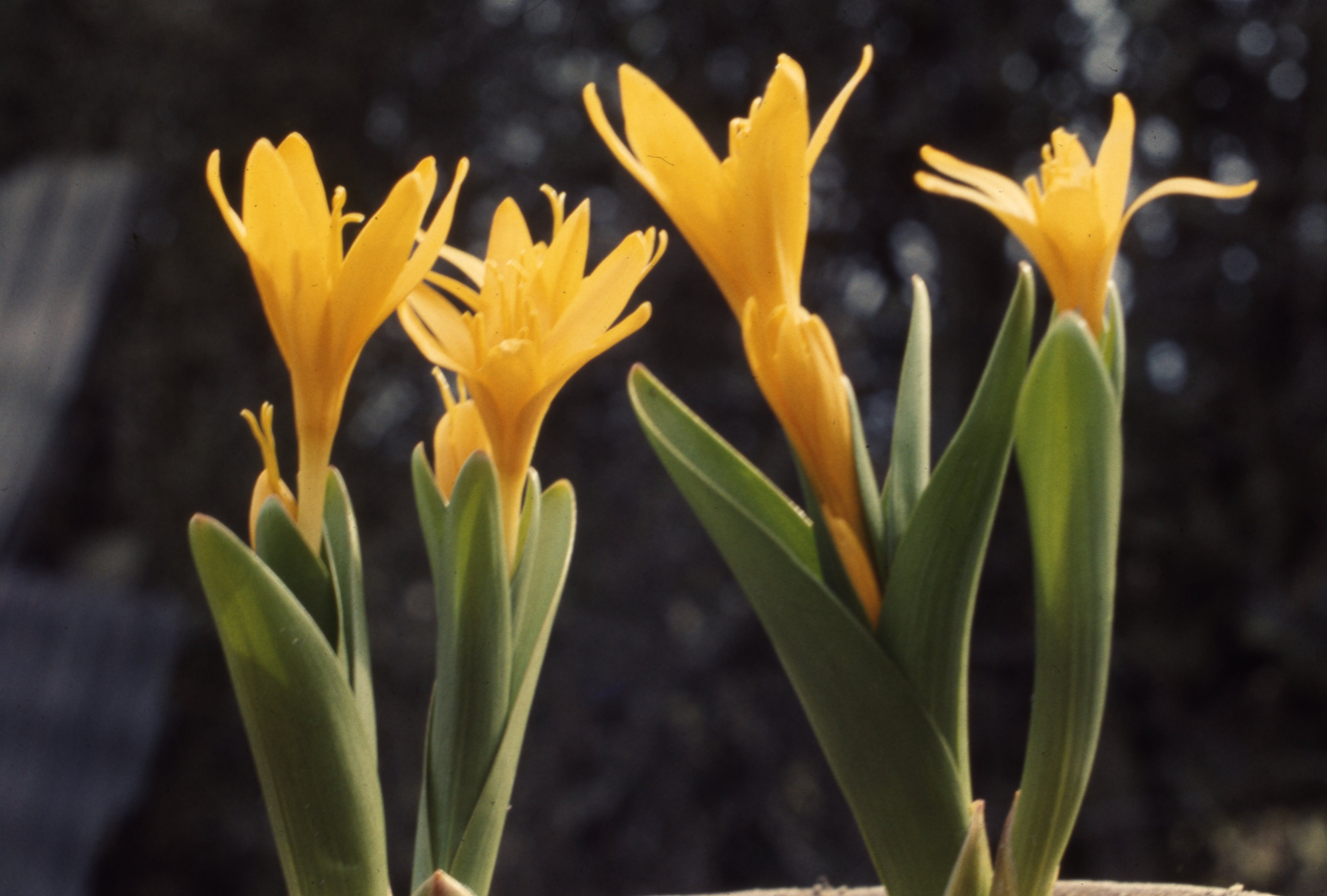Yellow autumn crocus
(Colchicum luteum)

Description
Colchicum luteum, commonly known as yellow autumn crocus or yellow meadow saffron, is a species of flowering plant in the family Colchicaceae. It is native to Europe and western Asia, and it has been introduced to North America. Description Colchicum luteum is a perennial herbaceous plant that grows from a corm, which is a bulb-like structure that stores nutrients for the plant. The corm is small, about 2-3 cm in diameter, and covered with a brown, fibrous tunic. The leaves of Colchicum luteum are long, narrow, and lanceolate, growing up to 30 cm long and 1 cm wide. They are green and slightly twisted, and they emerge from the corm in the spring. The flowers of Colchicum luteum are large, showy, and yellow, growing up to 10 cm tall. They are funnel-shaped and have six petals that spread out widely. The stamens are long and protrude from the flower, and the ovary is located at the base of the flower. The flowers emerge in the fall, usually in September or October, before the leaves. Distribution Yellow autumn crocus is native to Europe and western Asia and has a wide distribution range. It is found from southern France and Spain through the Balkans, Turkey, and Iran to the Caucasus and Central Asia. In the wild, it can be found in a variety of habitats, including meadows, woodlands, and rocky slopes. Colchicum luteum has also been introduced to North America, where it is grown as an ornamental plant. While it is not considered to be threatened, it is protected by law in some countries due to habitat destruction and collection from the wild for ornamental and medicinal purposes. Cultivation Colchicum luteum is a popular garden plant because of its attractive yellow flowers that bloom in the fall. It is easy to grow and does well in a variety of soils and light conditions. It prefers well-drained soil and full sun to partial shade. The corms should be planted in the fall, about 8-10 cm deep and 10-15 cm apart. Yellow autumn crocus is also used in traditional medicine, although it should be used with caution because it contains colchicine, a toxic alkaloid. Colchicine is a potent mitotic inhibitor and has been used to treat gout and other inflammatory conditions. It is also used in research to induce polyploidy in plants. Conservation Colchicum luteum is not considered to be threatened globally by the International Union for Conservation of Nature (IUCN), and it is listed as a species of "Least Concern." However, it is protected by law in some countries due to habitat destruction and collection from the wild for ornamental and medicinal purposes. Therefore, it is important to protect its natural habitat to ensure its continued survival. Conclusion Colchicum luteum, Yellow autumn crocus, is a beautiful and easy-to-grow plant that is popular in gardens and has medicinal properties. However, its toxicity should be taken seriously, and it should be used with caution. As with all wild species, it is important to protect its natural habitat to ensure its continued survival.
Taxonomic tree:







